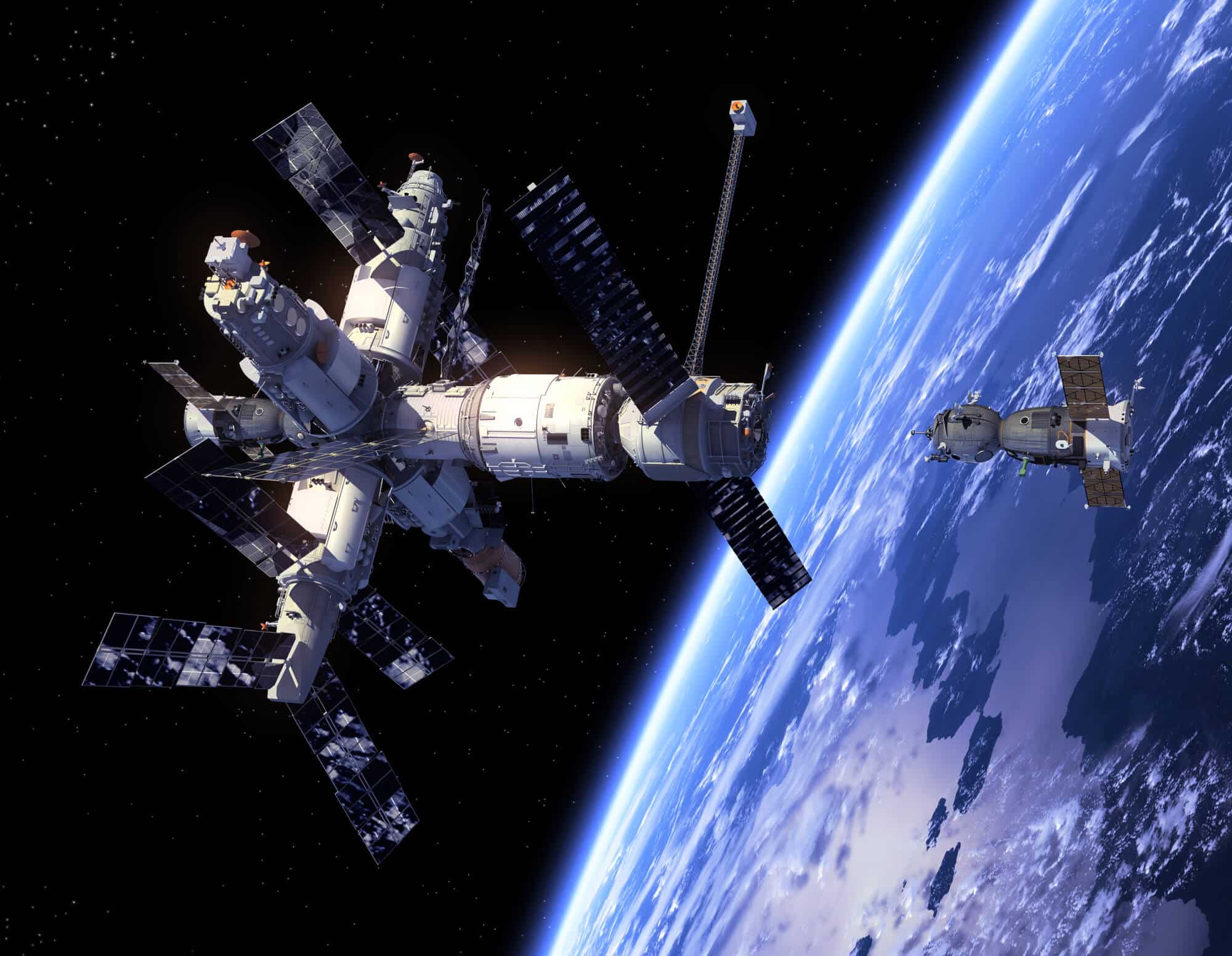Director of Roscosmos Dimitri Rogozin referred to the DMS-R facility used to navigate the station, although it was designed by the European Space Agency and integrated into the Russian component of the Zavezda space station * Also, the Progress cargo spaceships occasionally provide station orbit raising services * Elon Musk suggested that the SpaceX cargo spaceships perform the track repairs in place of the ruins

Dmitry Rogozin, the head of the Russian space agency Roscosmos threatened that if the sanctions are not stopped, Russia will stop providing services to maintain the orbit of the International Space Station and allow it to crash into the US or Europe. This is in addition to the order for Roscosmos employees to leave the launch facility in Kourou in French Guiana used by the European Space Agency.
"There is a possibility that the structure weighing 500 tons will fall on India or China. Would you like to threaten them? In any case the International Space Station do you want to endanger them? The station didn't fly over Russia anyway, so all the risks are the West's, are you ready for them?" asked Rogozin.
These words followed the announcement on Thursday by US President Joe Biden about the imposition of sanctions (sanctions) on the Russian economy. Most of the attention is directed to the disconnection of Russian banks from the SWIFT international settlement system, but an equally important part of the decision deals with the technological aspect, including a ban on the sale of chips to high-tech companies in Russia, and a ban on the sale of spare parts for aircraft and the military space industry.
Elon Musk offers SpaceX services as a replacement
The one who came to the station's defense was SpaceX CEO Elon Musk. A few hours after Rogozin's words, he tweeted the company's logo, and after commenters asked him for clarification, he added that not only the Russians send cargo spacecraft to the space station, but also SpaceX and that their engines can be used to perform orbit corrections. However, it is still unclear if there is a replacement for the station's cruise control computers, which are, as mentioned, in the Russian component of the station.
- Elon Musk (@elonmusk) February 26, 2022
While the aviation industry is already dealing with more urgent bans such as a ban on flights over the EU and a ban on landing for Russian airlines in the continent, in the field of space the cooperation between the US, the EU and the rest of the Western world and Russia is much more critical.
The space station is currently home to four NASA astronauts, two Russian cosmonauts and one European Space Agency astronaut. A NASA spokesperson told CNN that NASA continues to work with its space station partners, including Roscosmos.
The Russian wing of the International Space Station is responsible for guidance, navigation and control for the entire station, according to the European Space Agency. In addition, Russian Progress cargo spaceships bring up supplies and occasionally perform orbit corrections so that the station does not sink too low in the Earth's atmosphere and burn up.
The DMS-R facility was developed by the European Space Agency with an industrial team led by Astrium in Bremen, Germany. The facility is located in the Russian service module Zavezda. It includes a series of computers that provide the control, mission and fault management of the entire Russian section of the space station.
The DMS-R facility was developed by the European Space Agency with an industrial team led by Astrium in Bremen, Germany. The facility is located in the Russian service module Zavezda. It includes a series of computers that provide the control, mission management and fault management of the entire space station.
The application software for the on-board computers was developed by the Russian Zvezda contractor, RSC Energia, using a ground system provided by ESA – the hardware and software environment that supports software design, development, simulation, test and verification.
The Russian Service Module, with D-MSR inside it was launched by Russian spacecraft in July 2000.
NASA's response
NASA said in a statement that it "continues to work with Roscosmos and our other international partners in Canada, Europe and Japan to maintain the safe and continuous operation of the space station."
The space agency also added that the new export control measures will continue to allow cooperation in the civil space between the US and Russia. "No changes are planned in the agency's support for the current activity on the route and at the ground stations. The new export control measures will continue to allow cooperation in the civilian space between the US and Russia."
The space debris created by the Russians endangers the station
It should be noted that even before the invasion of Ukraine, the space agencies of the two countries had to deal with a surprise - not long ago Russia conducted an anti-satellite weapon test when it destroyed its failed satellite, and its fragments reached the orbit of the space station and forced the astronauts and cosmonauts inside it to enter a protected space inside the station twice.
More of the topic in Hayadan:
- Russia conducted an anti-satellite weapon test in which a downed satellite exploded and the resulting debris threatens the international space stations and the Chinese
- Will Elon Musk and SpaceX establish the first human colony on Mars?
- The space station had to change course again to avoid space debris
- The International Space Station was diverted from its orbit to avoid colliding with space debris

One response
Another Putin brainwash. If the country was democratic such a sentence would not have come out of his mouth. The dictatorship in its embodiment.